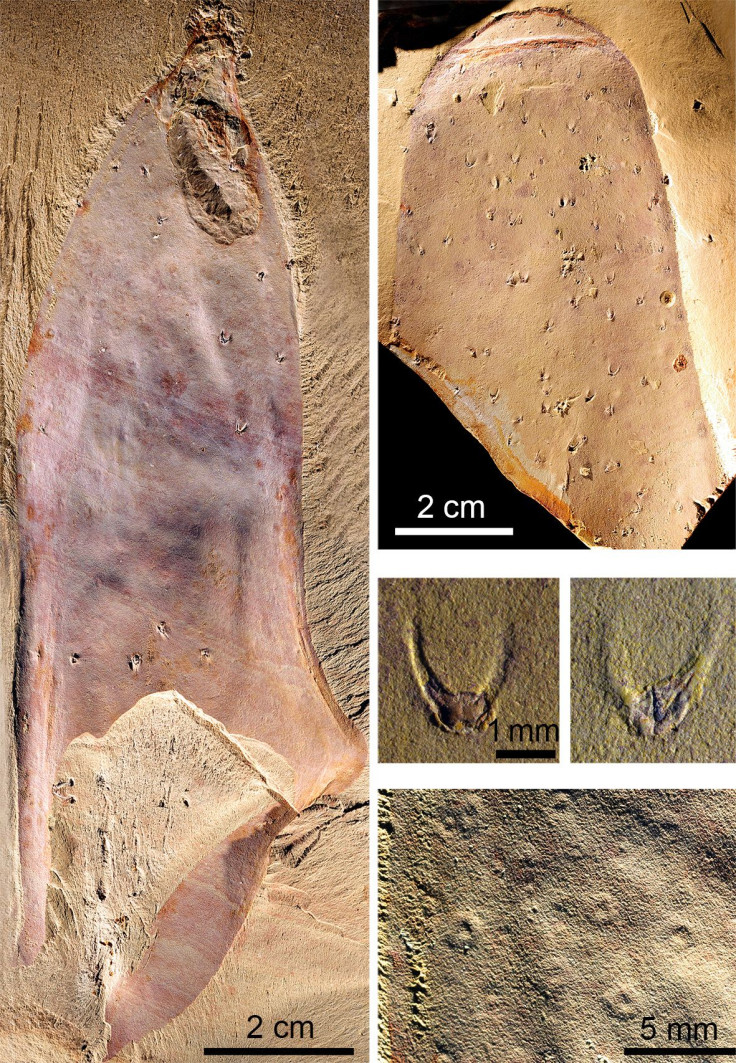‘Nude’ Sea-Creature Belonging To Mysterious Group Identified From Ancient Fossils

An international team of scientists found remains of a “nude” sea-creature, an unusual animal that lived on Earth more than half a billion years ago.
The creature, which has now been named Allonnia nuda, was identified from fossils discovered in the Chengjiang deposits of China’s Yunnan province. The remains were hiding in plain sight, which is why researchers posited the animal in question must have had a “naked” appearance.
Though there is hardly any information about the newly-discovered species, the initial analysis of the fossil suggested the creature had a surprisingly large tube-shaped body back in the day, measuring approximately up to 50 cm or more. It even had a few tiny spines on its body.
On the basis of these features, the group has suggested the animal belonged to a mysterious group of creatures known as chancelloriids.
According to the scant amount of fossil evidence recovered till date, chancelloriids represented a lineage of spiny tube-shaped animals that came to be during the Cambrian explosion — an evolutionary event that occurred 510 to 540 million years ago and marked a major surge in Earth’s diversity.
The animals thrived for some time and then went extinct, hardly leaving any evidence to understand their origin or demise. Many theories were posited to provide insight into the mysterious animals, but none of it could help scientists determine where the creatures fit in the tree of life.
"Fossil chancelloriids were first described around 100 years ago, but have resisted attempts to place them in the tree of life,” Tom Harvey, a member of the team behind the new find said in a statement.
Among various theories suggested for chancelloriids, one indicated the characteristics of the creature were pretty similar to sponges, a group of simple filter-feeding animals. The idea was widely debated for some time but dismissed later.
However, the discovery of the new “nude” sea-creature is once again supporting the case of sponges. According to the group, the fossil of ancient species holds clues about the pattern of body growth and indicates a clear connection to modern-day sponges.
“We argue that their pattern of body growth supports a link to sponges, reinvigorating an old hypothesis," Harvey added. “We're not suggesting that it's "case closed" for chancelloriids, but we hope our results will inspire new research into the nature of the earliest animals." The researchers even added that the findings suggest chancelloriids were more diverse than previously thought and many more such fossils could be hiding in plain sight.
The study detailing the fossil discovery was published June 19 in the journal Proceedings of the Royal Society B.
© Copyright IBTimes 2024. All rights reserved.





















